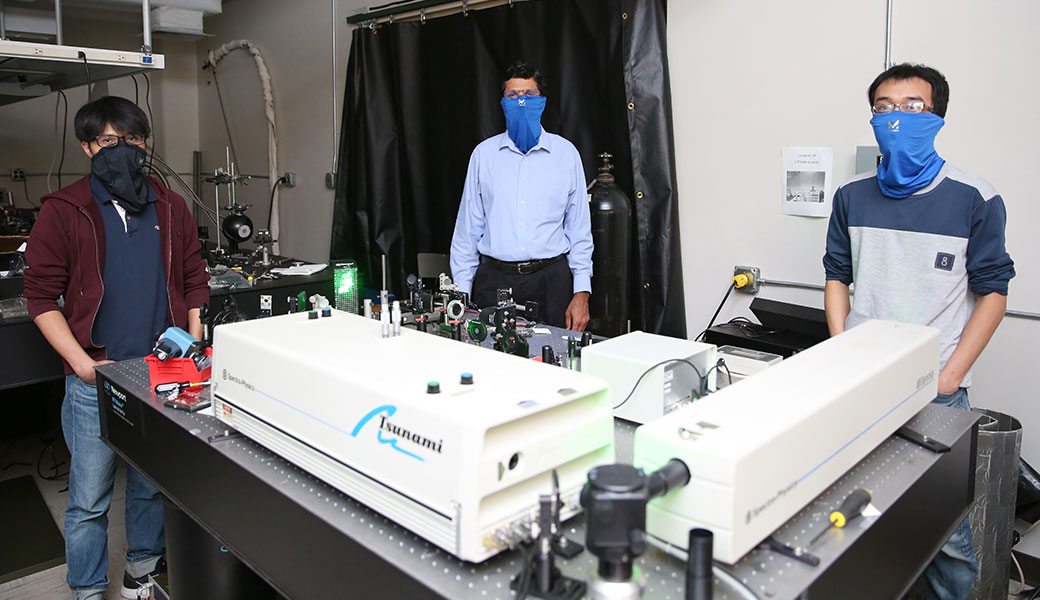University of Georgia researchers have demonstrated that neck gaiters can provide a level of protection equivalent to masks when used as a face covering.
Researchers from the UGA College of Family and Consumer Sciences and the Franklin College of Arts and Sciences sought to test the effectiveness of various face masks and gaiters in reducing the disbursement of respiratory droplets during speech.
The gaiters were compared to no mask at all, as well as to multiple two-layer, washable, breathable cloth masks, as recommended by the Centers for Disease Control and Prevention to help prevent the spread of COVID-19.
“Per CDC guidelines, using face covers to prevent the spread of COVID-19 is of the utmost importance,” said Suraj Sharma, professor in FACS and lead author on the study. “However, recent media reports have questioned the effectiveness of gaiters as face covers. In sum, the level of protection provided by a face covering appears to be substantially driven by the number and quality of layers of material and not whether it’s in the form of a gaiter or a mask.”
Materials tested consisted of the following:
- Four of the top-selling, two-layer face masks offered on Amazon.com, made of various materials (cotton and spandex).
- Five of the top-selling, single-layer gaiters offered on Amazon, made of various materials (polyester, spandex and nylon).
- Three multi-layer gaiters offered on Mission.com. Gaiters were two and three layers, made of polyester and spandex.

Study results showed:
- Single-layer gaiters provided a 77% average reduction in respiratory droplets compared to wearing no face covering at all.
- Two-layer masks provided an 81% average reduction in respiratory droplets compared to wearing no face covering at all.
- Multi-layer gaiters provided a 96% average reduction in respiratory droplets compared to wearing no face covering at all.
The results are consistent with results from a recent Virginia Tech study that showed layered neck gaiters provided similar performance to cloth masks when tested on mannequins.
The UGA study mirrored the protocol recently developed by Duke University and published by Science Advances: “Low-cost measurement of facemask efficacy for filtering expelled droplets during speech,” with additional enhancements.
Subjects spoke “Stay healthy people” five times into each of the materials for consistency, and droplets were monitored over a 40-second period.
A computer algorithm calculated the number of remaining respiratory droplets over time to determine the efficacy of each material’s ability to reduce respiratory droplets from the baseline of “no mask.” Each material was tested three times to increase accuracy and statistical significance.
Results were calculated using the droplet levels at both the 30-second and 40-second marks.
Enhancements to the original study were also put in place. Instead of using a HEPA filter, UGA scientists used a class 1000 clean room as well as a 3D-printed box to dramatically diminish existing particles in the air, thereby reducing the amount of “noise” or unwanted particles from appearing in the results.
Mission, a leading provider of textile accessories, provided funding for the study.
Sharma and graduate students Mazbah Uddin and Anuradhi Liyanapathiranage from the FACS department of textiles, merchandising and interiors led the study.
Co-leads on the study were Tho Nguyen, associate professor in the Franklin College of Arts and Sciences, with his Ph.D. students, Hoang Luong and Minh Pham.
A technical presentation about this study is available for download, as well as a Q&A with the lead author.






